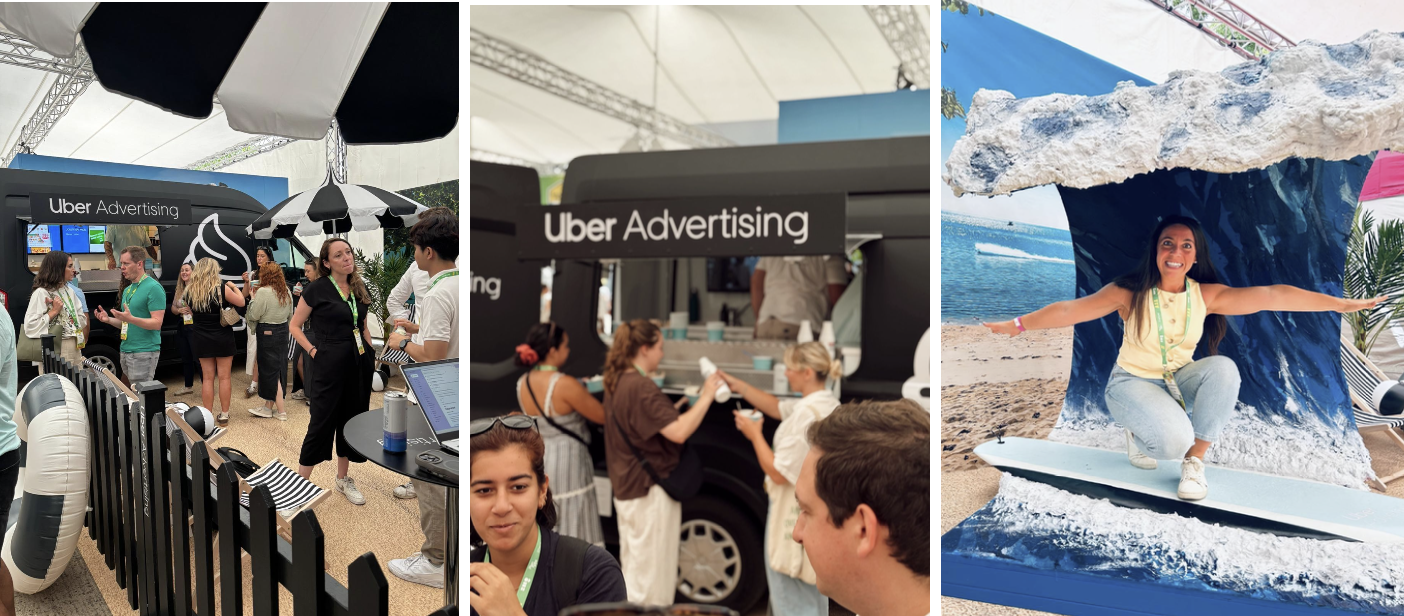How Uber Advertising is redefining creative connection
11 August 2025
What if great advertising isn’t about shouting louder, but showing up at exactly the right moment? At MAD//Fest, Uber Advertising’s Paul Wright revealed how the brand is redefining creative connection by mapping real consumer journeys, not just digital ones.
Standing on the main Hexagon stage while festival-goers enjoyed ice cream at our Brick Lane Beach activation, I found myself in the perfect position to demonstrate our point. Here stood Uber, providing exactly what people needed on a scorching day—contextual relevance in action. My talk explored how billions of real trips are reshaping advertising, moving us from guesswork to genuine understanding of consumer behaviour.

The Creative Studio revolution
While on stage, I unveiled Uber’s newly launched Creative Studio, all about creating immersive brand experiences. This is about connecting brands with audiences through the unique lens of mobility and movement to create original, culture-first moments.

While some platforms guess what consumers want, we know where they actually go and what they are interested in. Our Creative Studio transforms this behavioural data into advertising that enhances rather than interrupts. By analysing real trips and interactions, brands can create ads that feel authentic and relevant, capturing not just attention, but attention at exactly the right moment.
What sets our approach apart is its foundation in real-world behaviour. Our creative best practices framework emphasises contextual relevance, understanding that the most effective advertising speaks to consumers' immediate needs, whether they're heading to a restaurant with friends, off to a sports game or en route home from the airport.
Meet Gen Uber: the new consumer mindset
The key to all this? The consumers who are using our platforms. As our "Gen Uber" research reveals a completely fresh take on how people actually behave, regardless of age.
Our research, spanning Gen Z through baby boomers, reveals that generational labels arebecoming less relevant than behavioural patterns. Gen Uber represents a mindset rather than an age bracket—one built on three core pillars: convenience, value, and connection.
This emerging consumer segment challenges assumptions about screen time and digital engagement in three key ways:
1) Contrary to popular belief, Gen Uber doesn't live for the screen—they use it strategically to live more fully in the moment.
2) They're 30% more likely to prioritise real-world experiences over passive consumption.
3) They turn to on-demand solutions for efficiency, and as tools to enhance their social lives and create meaningful connections.
The trust revolution
Our research also reveals a fundamental shift in how consumers discover and evaluate brands.
Traditional digital advertising channels are losing their grip as Gen Uber increasingly turns to community-driven discovery. They seek peer recommendations, niche platforms, and trusted environments—like Uber's ecosystem—to guide their decisions.
This represents a seismic shift from algorithmic feeds to authentic relevance. Consumers are actively seeking advertising that feels less like interruption and more like integration. They wantbrands that understand their context, respect their time, and genuinely enhance their experience.
Move fast, or fall behind
So how do brands win? Success belongs to brands that can seamlessly blend convenience with authenticity, efficiency with emotion. Our Creative Studio's approach demonstrates how understanding real consumer behaviour—not just digital behaviour—can unlock more effective creative strategies.
For the marketing industry, the implications are profound. As traditional targeting methods become less effective, brands must find new ways to connect. Our research suggests the answer lies not in more sophisticated algorithms, but in deeper human understanding.
The brands that will thrive are those that recognise Gen Uber's fundamental truth: technology should enhance human connection, not replace it. In a world of endless digital noise, the most powerful advertising feels like a helpful recommendation from someone who truly understands your journey.
As MAD//Fest attendees filtered out of the Hexagon stage and toward a cooling ice cream, many were likely reconsidering their own creative strategies. In an industry obsessed with the next big thing, our insights offered something more valuable: a clearer understanding of what consumers actually want—and how to deliver it.
Curious to cut-through? Talk to the Uber Advertising team.

